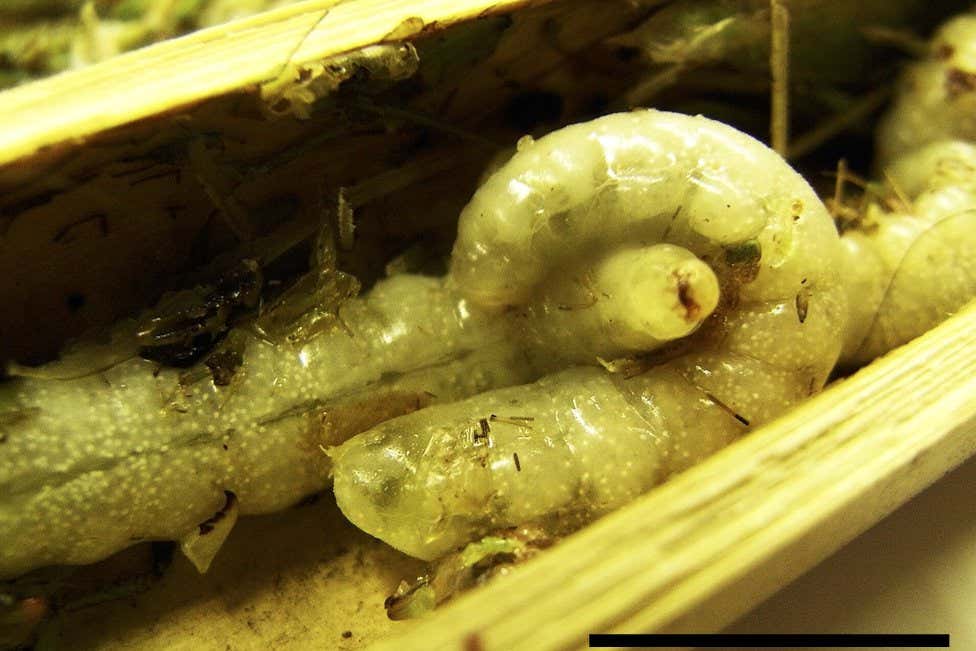Isodontia harmandi wasps make nests and leave food for their young in bamboo canes. When that food runs out, the larvae turn to cannibalism
Life 18 May 2022
Isodontia harmandi wasp larva feeds on its nest mate
Imasaki, Endo
Some wasp larvae take sibling rivalry to a new level by routinely cannibalising their nestmates.
Most wasp and bee larvae grow in individual brood cells within a hive. But solitary wasps like Isodontia harmandi are different. Females tuck fertilised eggs and food for their young into tunnel-like chambers such as bamboo cane – so that up to a dozen larvae may share a single cell. Bunking in such tight quarters creates fierce competition for food, and new research shows the larvae frequently turn on each other to guarantee a meal.
Before this study, “there were some anecdotal observations on cannibalism of this species”, says author Tomoji Endo at Kobe College in Japan. But “there was little evidence”, he says.
Advertisement
To see if and how these wasps were feasting on their family, Endo and his colleague Yui Imasaki placed bamboo cane in various locations throughout central Japan between 2010 and 2015. They waited for the females to lay their eggs inside, then brought the nests into their lab and watched the larvae develop.
In 30 of the 39 broods, young wasps opted to eat each other. The cannibalism continued in 23 of the nests after the cocoon phase began.
“We were of course shocked that wasp larvae routinely cannibalise their nest mates,” says Endo. “We were also impressed that there were no obvious aggressive interactions between cannibal and victim.” The larvae seemed to accept their fate without a fight.
Endo and Imasaki found that cannibalism was more likely to occur in brood cells with lots of larvae, and less likely to happen when foods provided by their mother like nectars, plants and smaller insects were abundant.
The researchers hypothesise that female wasps produce more offspring to ensure a side buffet is always available to their larvae. That way, some of their babies can avoid starvation should traditional food supplies run low.
Journal reference: PLoS One, DOI: 10.1371/journal.pone.0267958
Sign up for Wild Wild Life, a free monthly newsletter celebrating the diversity and science of animals, plants and Earth’s other weird and wonderful inhabitants
More on these topics:
































